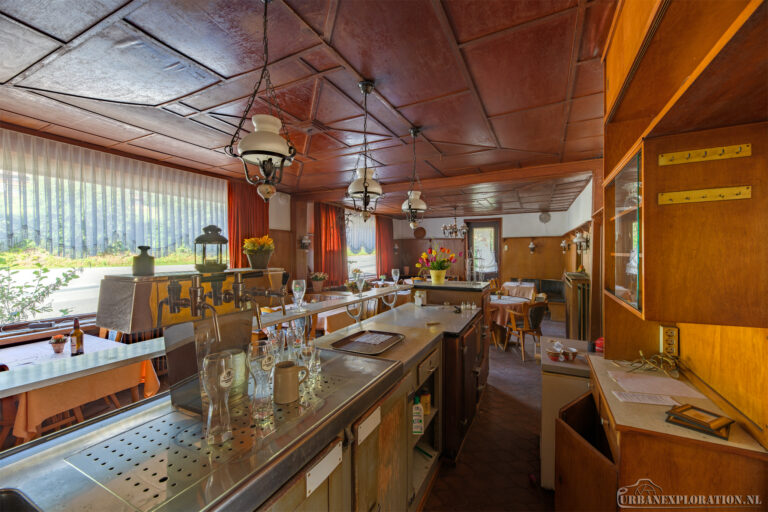House of the Painter
At the edge of a forgotten village in former East Germany, hidden among dense conifers and old pines, stands the house of a painter. Not famous, not wealthy simply a man who lived for quiet, for color, and for the landscape around him. Now his home rests in silence, slowly reclaimed by nature.
When you arrived just before nightfall, you immediately felt the abandonment. The villa stood half-buried in overgrowth, with crooked tiles and a driveway swallowed by weeds. Behind the house, a moss-covered Renault was sinking into the earth, as forgotten as its owner.
Inside, the silence felt heavy. The wooden staircase was crumbling, hanging in the air like a broken sculpture. In the living room, two armchairs and a small table remained exactly where someone had once left them. Another room had been completely taken over by moss and moisture, its walls veined with green and a cabinet barely clinging to the wall.
Upstairs, a small room held two items on a simple wooden shelf: a worn stuffed dog and a duck with a red scarf. Both coated in dust, untouched like quiet remnants of another time.
The bathroom still breathed the 1970s: beige tiles, a green toilet seat, and a bathtub filled with forgotten belongings. Even the shampoo still stood on the edge, waiting for a return that never came.
The bedroom was the most striking. The roof had collapsed inward, yet neatly pressed shirts and sweaters still hung in the wardrobe as if someone had once planned to come back. Light poured through the open roof, giving the room a strange, almost serene calm.
- Visited - November 2025
- Defunct - Unknown
- Status - In decline
- Country - Germany
























